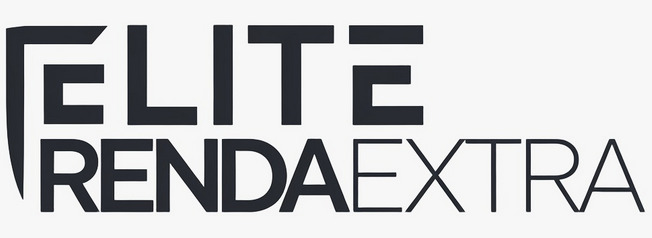Securing a personal loan can be a pivotal step towards achieving various financial goals, whether it’s consolidating debt, funding a significant purchase, or covering unexpected expenses. However, lenders don’t hand out loans to everyone; they have a specific set of criteria to assess an applicant’s creditworthiness and ability to repay the borrowed amount.
Understanding these eligibility factors is crucial before you even start the application process. Knowing what lenders look for can significantly improve your chances of approval and help you secure more favorable loan terms. Let’s delve into the key elements that financial institutions scrutinize.
Understanding the Maze: What is Personal Loan Eligibility?
Personal loan eligibility refers to the set of conditions and criteria that a borrower must meet to be approved for a personal loan by a lender. These criteria are designed to help lenders gauge the risk associated with lending money to an individual. Essentially, they want to be reasonably sure that you can and will pay back the loan as agreed.
Meeting these requirements not only increases your likelihood of getting the loan but can also influence the interest rate and loan amount you’re offered. A stronger profile often translates to better terms, saving you money in the long run.
The Pillars of Approval: Core Factors Lenders Scrutinize
While specific requirements can vary from one lender to another, several core factors are almost universally considered. Being aware of these can help you prepare your financial profile effectively.
1. Your Creditworthiness: Score and History
Your credit score and credit history are paramount in the eyes of lenders. A credit score is a numerical representation of your creditworthiness, typically ranging from 300 to 850. Lenders like FICO or VantageScore models are commonly used. A higher score generally indicates a lower risk to the lender.
What’s a “Good” Score? While there’s no magic number, a FICO score of 670 or above is often considered good, with scores above 740 deemed very good to excellent. However, some lenders specialize in loans for individuals with lower scores, though these may come with higher interest rates. Understanding your credit score components is essential.
Your broader credit history also plays a vital role. Lenders will look at:
- Payment History: Do you pay your bills on time? Late payments can significantly lower your score.
- Credit Utilization: How much of your available credit are you using? Lower utilization (ideally below 30%) is better.
- Length of Credit History: A longer history of responsible credit use can be beneficial.
- New Credit: Opening too many new accounts in a short period can be a red flag.
- Credit Mix: Having a mix of different types of credit (e.g., credit cards, installment loans) can be positive if managed well.
Regularly checking your credit report for inaccuracies and disputing any errors is a crucial step in maintaining a healthy credit profile.
2. Income and Employment Stability: Can You Repay?
Lenders need assurance that you have a stable and sufficient income to cover your monthly loan payments along with your other financial obligations. They will want to see proof of income, which can include recent pay stubs, W-2 forms, tax returns (especially if self-employed), or bank statements.
Employment History: A consistent employment history is generally viewed favorably. Frequent job changes or long periods of unemployment might raise concerns for some lenders, as they may indicate instability. However, the context matters, and a strong overall financial picture can sometimes offset a less-than-perfect employment record. The key is demonstrating a reliable income stream.
3. Debt-to-Income Ratio (DTI): Balancing Your Obligations
Your Debt-to-Income (DTI) ratio is a critical metric lenders use to assess your ability to manage monthly payments and repay debts. It’s calculated by dividing your total monthly debt payments (including mortgages, auto loans, student loans, credit card minimum payments, and the proposed new loan payment) by your gross monthly income (income before taxes). The result is expressed as a percentage.
Lenders prefer a lower DTI because it suggests you have a good balance between debt and income, and you’re not overextended financially. While thresholds vary, many lenders look for a DTI below 43%, with some preferring it to be under 36%. Understanding your Debt-to-Income Ratio is key to managing your finances.
4. Loan Specifics: Purpose and Amount Requested
The reason you’re seeking a loan and the amount you’re asking for also play a part. Lenders may be more inclined to approve loans for purposes they deem responsible, such as debt consolidation or home improvements, compared to discretionary spending if other risk factors are present.
Moreover, the loan amount you request should be realistic and align with your financial capacity. Asking for an amount that seems disproportionate to your income or ability to repay could lead to a rejection or a counter-offer for a smaller sum. Lenders assess if the requested amount poses an undue risk based on your overall financial health.
Beyond the Core: Additional Elements in the Lender’s Toolkit
While the factors above are primary, lenders might also consider other elements:
- Collateral (for Secured Personal Loans): If you’re applying for a secured personal loan, you’ll need to offer an asset (like a car or savings account) as collateral. This reduces the lender’s risk, potentially leading to easier approval or better terms.
- Having a Co-signer or Co-applicant: If your own eligibility is borderline, applying with a co-signer or co-applicant who has a strong credit and income profile can improve your chances. However, the co-signer becomes legally responsible for the debt if you default.
- Banking Relationship: Sometimes, having an existing positive relationship with the bank or credit union (e.g., checking or savings accounts in good standing) can be a slight advantage.
- Overall Financial Profile: Lenders may also look at your broader financial health, such as your savings, investments, or cash flow patterns, to get a complete picture.
Key Factors at a Glance and How to Improve Them
Understanding these factors is the first step. The next is taking action. Here’s a quick summary table:
| Factor | Why It Matters to Lenders | Ideal Status/Goal | How to Improve |
|---|---|---|---|
| Credit Score & History | Indicates past creditworthiness & repayment likelihood. | Good to Excellent (e.g., 670+ FICO, varies by lender) | Pay all bills on time, reduce credit card balances (lower utilization), dispute errors on credit reports, avoid opening too many new accounts quickly. |
| Debt-to-Income (DTI) Ratio | Shows ability to manage current debt and take on more. | Low (ideally below 36%, generally max 43%) | Pay down existing debts (especially high-interest ones), increase your income, avoid taking on new unnecessary debt before applying. |
| Income & Employment Stability | Confirms ability to make regular loan payments. | Stable, verifiable, and sufficient income for loan size. | Maintain steady employment, document all income sources thoroughly, ensure income is sufficient to cover new loan payments comfortably. |
| Loan Purpose & Amount | Helps lenders assess risk and responsible borrowing. | Clear, reasonable purpose; amount aligned with need & repayment capacity. | Borrow only what you truly need and can comfortably afford to repay. Clearly articulate the loan’s purpose if asked. |
Proactive Steps: How to Boost Your Personal Loan Eligibility
If you’re concerned about meeting eligibility criteria, there are several proactive steps you can take:
- Review Your Credit Reports: Obtain free copies from all three major bureaus and scrutinize them for errors that could be dragging down your score. Dispute any inaccuracies.
- Work on Your Credit Score: Focus on making on-time payments and paying down high credit card balances to lower your credit utilization ratio.
- Reduce Your DTI: Prioritize paying off existing debts, especially those with high interest rates or large payments. Explore ways to increase your income if feasible.
- Stabilize Your Income: If your employment is unstable, try to secure a more permanent position or build a longer track record in your current role before applying.
- Shop Around and Pre-qualify: Many lenders offer a pre-qualification process that uses a soft credit check (which doesn’t hurt your score) to estimate your likelihood of approval and potential terms. This allows you to compare offers.
- Consider a Smaller Loan Amount: If you’re not approved for the amount you want, see if a smaller loan is an option that still meets your most critical needs.
- Build Up Savings: Having some savings can demonstrate financial responsibility and provide a cushion, which lenders may view positively.
Navigating the Application: What to Expect
Once you’ve assessed your eligibility and prepared your finances, the application process typically involves submitting personal information, financial details, and documentation. Be prepared to provide identification (like a driver’s license or passport), proof of address, proof of income (pay stubs, tax returns), and details about your existing debts. The lender will then conduct a hard credit inquiry, review your application, and make a decision.
Understanding personal loan eligibility is about more than just getting approved; it’s about positioning yourself for the best possible loan terms. By focusing on these key areas, you can approach lenders with confidence and take a significant step toward your financial objectives. For a comprehensive overview of what lenders generally assess, understanding these key factors lenders consider for personal loan eligibility is crucial for any potential borrower.



